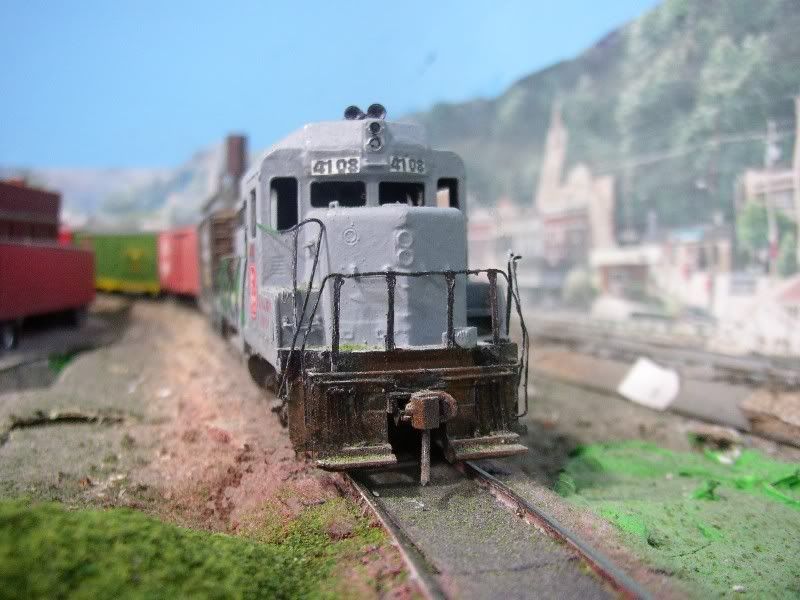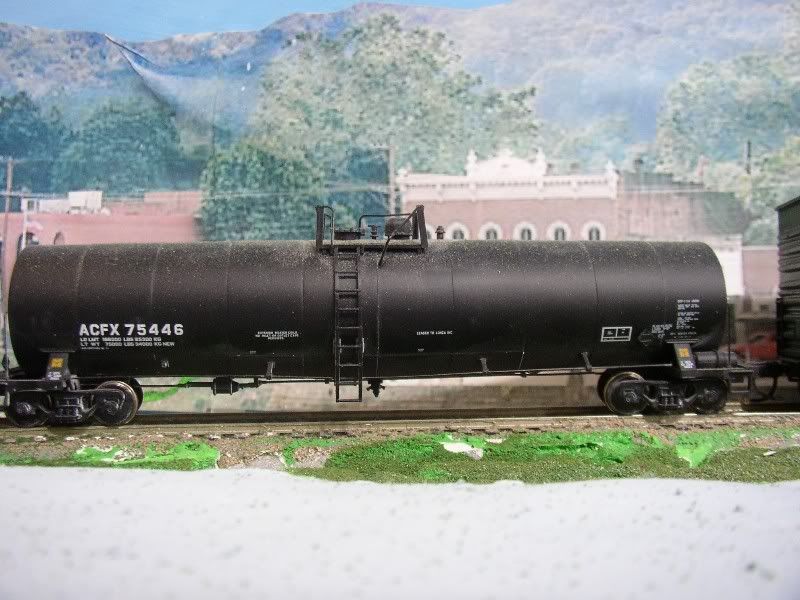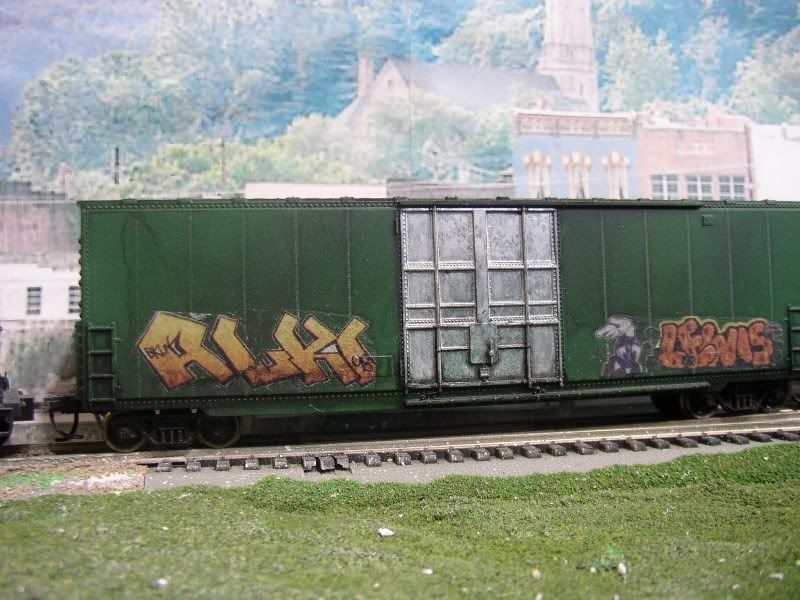A bit further north on River Road brought me here: Ruthven National Historic Site. I had passed under a girder bridge about a mile or so north of the first bridge, and this was on the only road anywhere nearby. I was hoping to get a look at another bridge over the Grand River, that of the former Michigan Central/Canada Southern line, but it was nowhere in view. I'll have to hike the right-of-way next time - it looks like only a mile or so from the road to the river. The underbrush along the river looks to be too thick to reach it that way. This is the west side of the house, facing towards the river:
I had some errands to run in Stoney Creek, so I headed back that way. While I was unfamiliar with the backroad that I took, it was headed in what seemed to be the proper direction to take me to the namesake of a spot on my layout, Chippawa Creek:
I lifted only the name: the prototype has no tracks in this area (Caistorville), no trains, and almost no water!

There's a road running alongside the river, out of sight to the left, and hidden by the trees is a house where we lived many years ago. That's why the name was used, although farther south, this is known as the Welland River.
After finishing my errands, I travelled down the Niagara Peninsula to the town of Jordan Station. The former station was relocated from beside the tracks to a lot on Prince Albert St. and is in use as a private residence. I took these from the street (out of the truck window): the tracks are about a block away, behind me.
Not too many homes have their own semaphore.
Here's a better picture:
The real reason that I came here, though, was to have a look at the CNR bridge over Twenty Mile Creek, or, as it's known locally, The Twenty. This bridge is visible from the main highway through the Niagara area, the Queen Elizabeth Way, but that's not a good place to stop and take photos. Here's a shot from the rail bridge, looking over The Twenty, towards the QEW, with Lake Ontario visible beyond that. Niagara Falls is about 20 miles or so to the right, and Hamilton, Ontario about the same distance to the left.
The entire line used to be doubletracked not that many years ago, but one track was removed when an improved signalling system was installed. This is part of the Grimsby Sub, and the mainline from New York State into Southern Ontario.
Even though there's a walkway on both sides, this is close enough for me.
If you look closely at the picture above, you'll notice a series of stone bridge piers. Here's a slightly better view:
Here's a link to a much better view: by an unknown photographer, and from the Francis J. Petrie collection of the Niagara Falls (Ont.) Public Library. These stone piers were built for the Great Western Railway, which later became the Grand Trunk, then the Canadian National.
Great Western bridge
I wandered out onto the old abutment, not realising how high it was

as it appeared to be another fill, especially with all the trees and underbrush around. The vandals are obviously not afraid of heights, but luckily, they seem to have run out of paint. :-D Or maybe they fell off! :twisted:
It was when I looked this way that I realised how high this abutment is: the builders of the newer bridge started a full span closer to the natural embankment.
Here are a couple of detail shots: The running rail is 115 lb., mostly welded, with a couple hundred feet of jointed rail leading to the bridge, and, in longer lengths, across it, too. Lots of rail anchors in use. The guard rails are 100 lb., spiked every other tie.
I'm not sure what the pipe is (may be a conduit for wire, although there are some of those on the outer faces of the bridge). You'll notice that each track had its own ties. The iron strap bolted to each tie is to keep them from "walking" with the movement of trains over the rail, and I would guess that the bolts with the square washers on every second tie are to fasten them to the structure of the bridge.
And last, a view of at least one of the reasons that modern railroads prefer ballasted-deck bridges: Either the ballast at the edge of the abutment is low or the bridge has gained a bit of height due to sitting in the hot sun all day.
Wayne













































